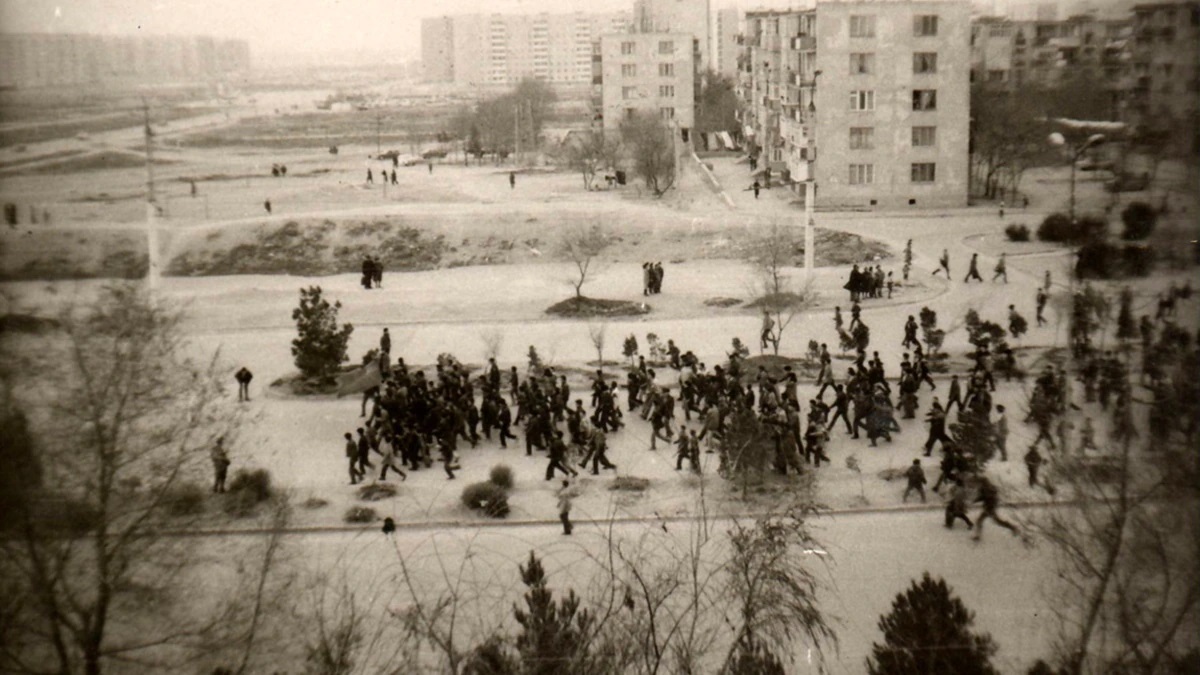Azerbaijan’s Foreign Ministry responded to statements made by the Armenian Foreign Ministry about the events that took place in the Sumgait city of Azerbaijan in 1988.
“We have repeatedly responded to the completely baseless and false allegations made by the Armenian Foreign Ministry in connection with the events in Sumgait. We emphasize once again that the bloody events of late February 1988 in Sumgait, Azerbaijan SSR, were a premeditated and planned provocation against Azerbaijan. We remind that the USSR Prosecutor General's Office opened a criminal case in connection with the incident, conducted an investigation, and identified the perpetrators of the riots and accomplices, as well as a total of 32 victims. We would like to note that 6 of the victims were Azerbaijanis,” the ministry’s spokesperson Leyla Abdullayeva said.
She added that the investigations exposed Armenian national Eduard Grigoryan as the mastermind of events.
“The perpetrator of the incident, Eduard Grigoryan, who led the march, killed six people and raped three women of Armenian descent, was an Armenian by nationality, and regarding him numerous testimonies of Armenians living in Sumgait were collected. Eduard Grigoryan, who was sentenced to 12 years in prison, was transferred to Armenia to serve his sentence and was later released,” Abdullayeva explained.
The bloody provocation against the residents of the Sumgait city took place on February 27-29 in 1988.
The Prosecutor General’s Office of Azerbaijan found that the culprits of the events were Grigoryan and his brothers Albert and Ernis who have been instructed by the emissaries from the then Nagorno-Karabakh region and the representatives of the Soviet KGB to find and kill ethnic Armenians who did not transfer money to the “Karabakh” and “Krunk” organizations created by Armenian separatists. Armenian special services also teamed up with the Soviet KGB to expand the reach of provocations by deploying a group of 34 Armenian criminals, codenamed “Naletchik” (“Raiders”), in Sumgait.
According to the Prosecutor General’s Office of Azerbaijan, “it was fully proved that the true essence of the Sumgait events was a bloody provocation as the "official reason" for the struggle to separate Nagorno-Karabakh from Azerbaijan.”
The events in Sumgait took place at a time when Yerevan was scaling up efforts to claim Azerbaijan’s Karabakh region as Armenian territory. These claims fueled social unrests and calls to unify the region with Armenia, known as the notorious “miatsum” movement of Armenian separatist nationalists.
Shortly after the dissolution of the Soviet Union in 1991, Armenia launched a full-scale military attack on Azerbaijan. The bloody war ended with a ceasefire in 1994, which saw Armenia forcibly occupying 20 percent of Azerbaijan’s internationally recognized territories. Over 30,000 Azerbaijanis were killed, 3,890 went missing, and one million others were expelled from those lands in a brutal ethnic cleansing policy conducted by Armenia.
On September 27, 2020, the Armenia-Azerbaijan conflict took a violent turn when Armenia’s forces deployed in the occupied Azerbaijani lands shelled military positions and civilian settlements in Azerbaijan. During the counter-attack operations that lasted 44 days, Azerbaijani forces liberated over 300 settlements, including the cities of Jabrayil, Fuzuli, Zangilan, Gubadli, and Shusha, from nearly 30-year-long illegal Armenian occupation. The war ended with the signing of a tripartite statement by Armenia, Azerbaijan and Russia on November 10, 2020. Under the agreement, Armenia also returned the occupied Aghdam, Kalbajar and Lachin districts to Azerbaijan.







 Iran's senior military leaders described the drone and missile attack on Israel on April 14 night as “successful".
Iran's senior military leaders described the drone and missile attack on Israel on April 14 night as “successful".
 The number of evacuees from flooded areas in Kazakhstan has reached 97,852 people, including about 32,856 children since March 27.
The number of evacuees from flooded areas in Kazakhstan has reached 97,852 people, including about 32,856 children since March 27.
 Iranian President Ebrahim Raisi warned Israel that it would face a "real and extensive" response if it makes any "mistake" following Tehran’s missi...
Iranian President Ebrahim Raisi warned Israel that it would face a "real and extensive" response if it makes any "mistake" following Tehran’s missi...



